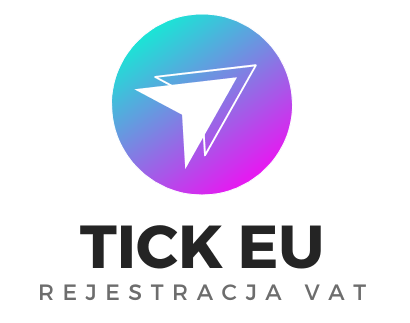Recently, the European Parliament called on the Commission to “opt for the expansion of e-invoicing and called for a harmonizing [sic] standard for e-invoicing in the EU” [1]. This idea seems to be supported by many EU Member States as well as private organizations. But what exactly does this need for harmonization mean? Does the pan-European standard for e-invoicing EN 16931 already exist? In the following, we will try to answer these questions. In addition, we will delve into the harmonization of reporting standards that can be offered by bo.tick.com.pl, Tick’s system.
A brief history of e-invoicing in the EU
Before we look at specific standards, it’s a good idea to have a clear definition of e-invoicing itself:
“Electronic invoice means an invoice that has been issued, sent and received in a structured electronic format that allows automatic and electronic processing” [2].
The current discussion on e-invoicing is not new, it has actually been going on for several years. In Europe, the Nordic countries were the first to adopt e-invoicing widely. As early as 2005, Denmark introduced an obligation for transactions between the public and private sectors (B2G). [3] Finland, Norway and Sweden followed soon after. In 2014, the European Commission adopted Directive 2014/55 / EU [4] to promote e-invoicing in a coordinated manner among its Member States. The Directive states that from 2019 public administrations of EU Member States must be able to receive and process electronic invoices [5]. This has led to the implementation of mandatory B2G e-invoicing across the EU [6].
The idea was that B2G would be followed by B2B due to the run-off effect. This was only partially the case as in many Member States the number of e-invoices compared to the total number of invoices remained stagnant for a long time. However, it seems that a turning point has recently been reached – more and more Member States are considering mandatory electronic invoicing for B2B transactions due to the emphasis on real-time reporting. This still requires a derogation from the VAT Directive. Italy was the first to obtain this derogation by introducing mandatory B2B e-invoicing in 2019 [7] Recently, France has also obtained this derogation in planning to introduce mandatory B2B e-invoicing in 2024. [8] And recently Poland has been mandated to implement e-invoicing on a mandatory basis [9]. While this will increase e-invoicing, the downside is that most countries use different standards, making it difficult for businesses to adhere to general accepted standards. That is why more and more actors are now calling for harmonization of e-invoicing in the EU.
Various standards, but (almost) all based on EN 16931
ZUGFeRD, NLCIUS and Finvoice are just a few of the different e-invoicing standards used across the EU. While their names seem to be completely different, all of these standards are based on EN 16931 (Semantic Data Model). According to Directive 2014/55 / EU, all public entities in the EU must be able to receive invoices based on this “Basic Invoice” standard with possible UBL and CII syntaxes. [10] However, Member States are free to define the use, e.g. by making certain fields optional. This creates a Basic Invoice Usage Specification (CIUS), an example of which is NLCIUS. [11] In other words, NLCIUS is an implementation of EN 16931, specified in the Dutch context, while SI-UBL 2.0 is essentially an implementation of the UBL NLCIUS. In addition, some sectors have additional specifications, all in one country. Italy takes a different approach, with a national XML standard that is not based on the EU standard: FatturaPA. At the same time, CIUS-IT was developed, which is an implementation of the EN 16931 standard in the Italian context. CIUS-IT is also accepted by the Centralized Clearance System (SdI). [12]
Other Member States use Peppol BIS 3.0, which is again CIUS compliant with EN 16931 but can be further defined in a national context. For example, Sweden and Denmark have different rules in Peppol BIS 3.0. [13] So while OpenPeppol has developed an open standard based on EN16931, there are still some national differences. Finally, the upcoming e-invoicing system in France will accept at least three e-invoicing standards, although all are based on the EN 16931 standard: UBL, CII and Factur-X.
In conclusion, the e-invoicing landscape in the EU seems to be relatively harmonized thanks to the EN 16931 standard. However, due to the country specific context, there are still specific implementations (CIUS, eg the Netherlands) or completely different standards implemented (eg Italy). This still makes it difficult for companies operating in multiple countries and / or engaging in intra-Community transactions to meet the requirements.
Harmonization of digital reporting requirements (DRR)
Looking at all these national specifications, the question arises: is it possible to further harmonize e-invoicing standards for EU Member States? These national specifications seem to be necessary or at least important to national governments. Previously held political discussions with a similar goal around the harmonization of VAT returns do not give much hope for real harmonization. It turned out that it was impossible to agree on the content of one EU VAT return. While the VAT return is a relatively simple (electronic) form, e-invoices can be very complex and, as we have shown, are often specified in a national context.
While it is important to continue the dialogue on the harmonization of e-invoicing and to ensure that all countries comply with the EN 16931 standard, it may be more fruitful to focus first on harmonizing the new VAT reporting standards. As we mentioned before , in addition to e-invoicing standards, the so-called digital reporting requirements (DRR). The 2019 European Commission report even states that cross-border compliance problems are not only due to e-invoicing, but “additional e-reporting requirements are the main barrier in this area” [14]. Upcoming European Commission proposal on DRR, which appears to take the form of a real-time intra-community reporting system. It provides excellent dynamics to further improve these standards. While full harmonization is difficult to achieve in almost every context, an intra-Community real-time reporting system could steer in a certain direction Member States that have not implemented a national real-time reporting system. Likewise, there are still many EU Member States that have not implemented any DRR, which makes it somewhat easier to achieve harmonization between these countries.
Harmonization of e-invoicing is a hot topic in the VAT world in the EU. However, it is not always clear what exactly this harmonization means. In this blog post, we tried to show that the e-invoicing landscape in the EU is already somewhat harmonized with the EN 16931 standard, but national specifications (CIUS) vary across the EU. In addition, some countries still use standards that do not comply with EN 16931. Further harmonization of these standards will be extremely difficult due to national preferences. Therefore, it may be more realistic to harmonize real-time reporting obligations, which are an equally important obstacle to cross-border compliance.


